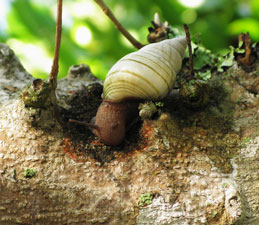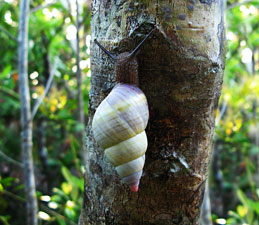Why Study Lichens?
Well, for a lot of reasons. First, research in lichenology has sorely lagged most other studies of the natural world. The bulk of lichens worldwide are yet to be identified. In many areas of the world they are poorly known and south Florida is certainly one of those. For example, in 2009 fifteen members of the Tuckerman Workshop spent 4 days at Fakahatchee Strand Preserve State Park in extreme southwest Florida inventorying lichens. This brief foray produced 18 species previously unknown to science plus 87 not known to exist in North America north of Mexico. It is estimated there are more lichens yet to be found than the number currently known. Additional work is clearly necessary to establish reliable inventories if we hope to understand this complex form of life. Our main emphasis is in Everglades National Park where 510 species have been identified to date (6 new to science plus 26 new to the continent) and more being found with nearly each collection foray. With our involved database documenting each collection we eventually hope to better understand the many faceted role lichens play in the unique Everglades ecosystem.

Tree snail grazing on Pyrenula cruenta.
Secondly, as an understudied life form, much of what lichens do and how they do it is not well understood. In the lichen association, we get a chance to study some of their interrelated behavior not seen in their isolated state. These studies are augmenting our knowledge of the natural world. Some of this knowledge may have direct or indirect implications for humans (see below).
Lichens are also proving to be useful as bioindicators. Probably the earliest and most common use of lichens as bioindicators has been in the field of air pollution. Many lichens are very sensitive to atmospheric pollutants, either thriving on them or by being extirpated from contaminated locations. Using lichens to define areas of high air pollution, a study in Italy showed a high correlation between those areas and cancer.
Additionally, the presence of certain lichens have been shown to be a reliable indicator of old growth forests. And, in the United States northwest, some lichens have been useful in identifying endangered Spotted Owl habitat. Other parameters can be used for this purpose but the lichen approach is easier in that they are immobile and easier to find than the Spotted Owl itself.
Another recent example comes from Wisconsin where wildlife, particularly white-tailed deer, have been infected with chronic wasting disease. According to the research, the disease is caused by infectious brain-performing proteins called prions. Heretofore, these have been impossible to exterminate as they remain infectious for many years. Lichen research has discovered a chemical produced by certain lichens that is capable of degrading the prions at least under laboratory conditions. The study stated that the chemical metabolized by these lichens "has great potential for safely reducing the number of prions". Read more at: http://host.madison.com/news/local/environment/study-lichen-can-help-fight-chronic-wasting-disease-in-wildlife/article_2e5b7fc8-826f-11e0-88e9-001cc4c03286.html#ixzz283fSSE63. These are only a few such examples and it seems certain many more will be discovered with continuing research.
Lichenometry is another branch of lichen study which is proving useful in several disciplines as a geochronologic aging tool. Many crustose lichens increase their size at constant rates. Once that rate is known the largest lichen of a species can determine the minimum amount of time a rock surface, for example, has been exposed.

Tree snail grazing on Everglades lichens.
In some parts of the world lichens are an essential food source to other organisms such as reindeer and caribou. Many human cultures also eat lichens. In the Everglades, tree snails (Liguus fasciatus), a species of special concern, have been observed grazing on them. Several other organisms using lichens as a food source include slugs, beetles and the American cockroach (Periplaneta americana). The importance of lichen interaction with these life forms, and perhaps other organisms, is currently unknown. But whether essential, significant or non consequential, the subject deserves further study.
Another reason to study lichens pertains to their role in nutrient recycling and input into their respective ecosystems. For example, in some areas lichens may be primary colonizers of barren habitats. In these environments some lichens are able to cycle atmospheric nitrogen into the soil thereby enriching it and facilitating colonization of other life forms. Although this specific example may not occur in the Everglades, whatever related role they may play remains unknown through lack of study.
Lichen researchers are also taking advantage of their ability to metabolize chemicals from readily available substances such as carbon, hydrogen, etc. As our detection ability improves, new lichen metabolites are being discovered. Some of these have already been shown to be important in human medicine and many others economical as ingredients in various manufacturing processes. With further study new metabolites will be found that may have environmental or human implications (See section "Lichens and Humans").
Although still poorly understood, even the current status of lichen study has explained a number of previously unknown environmental processes, some with potential beneficial implications to humans and/or the natural world. It seems very possible with continued study other processes have yet to be discovered.